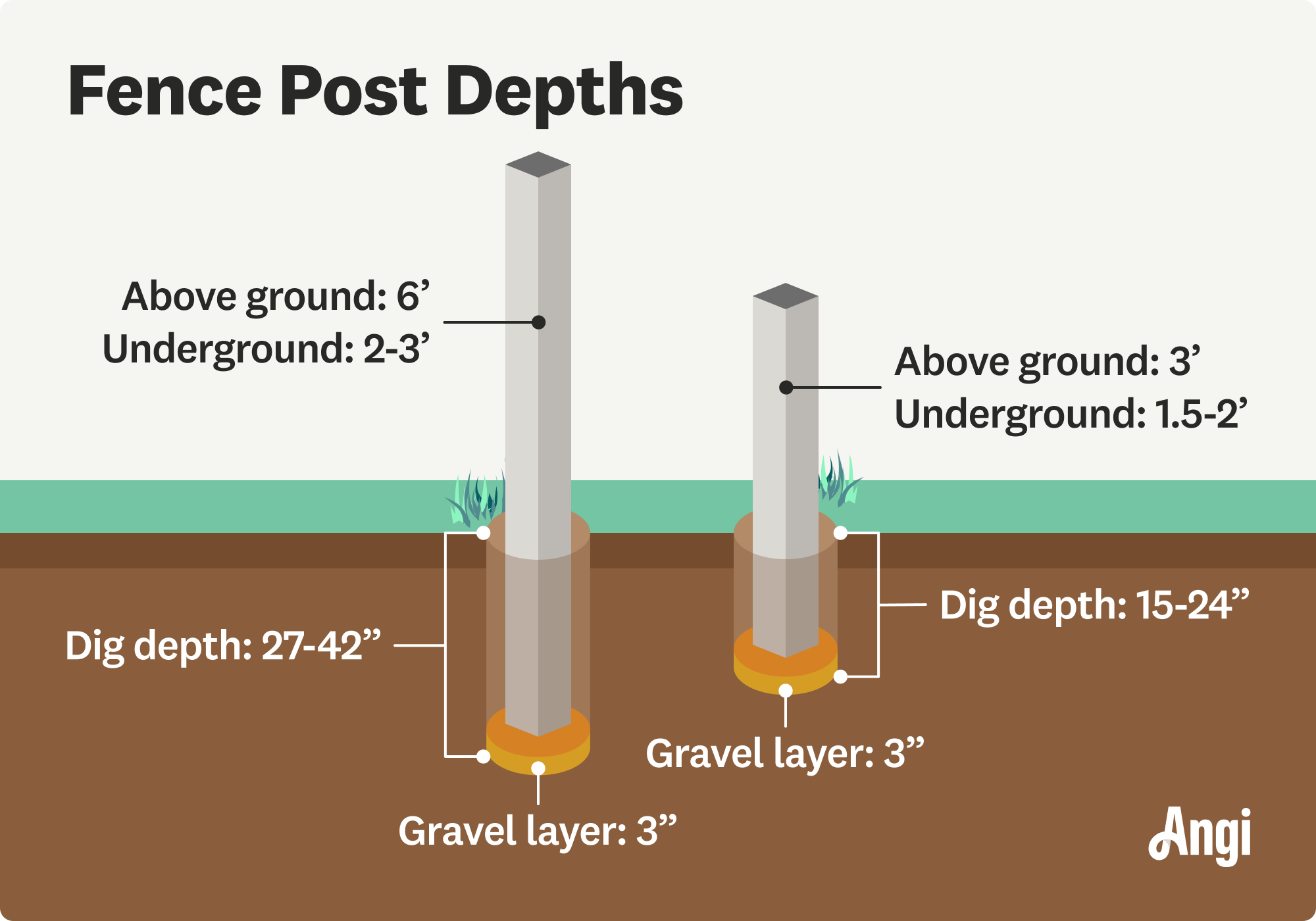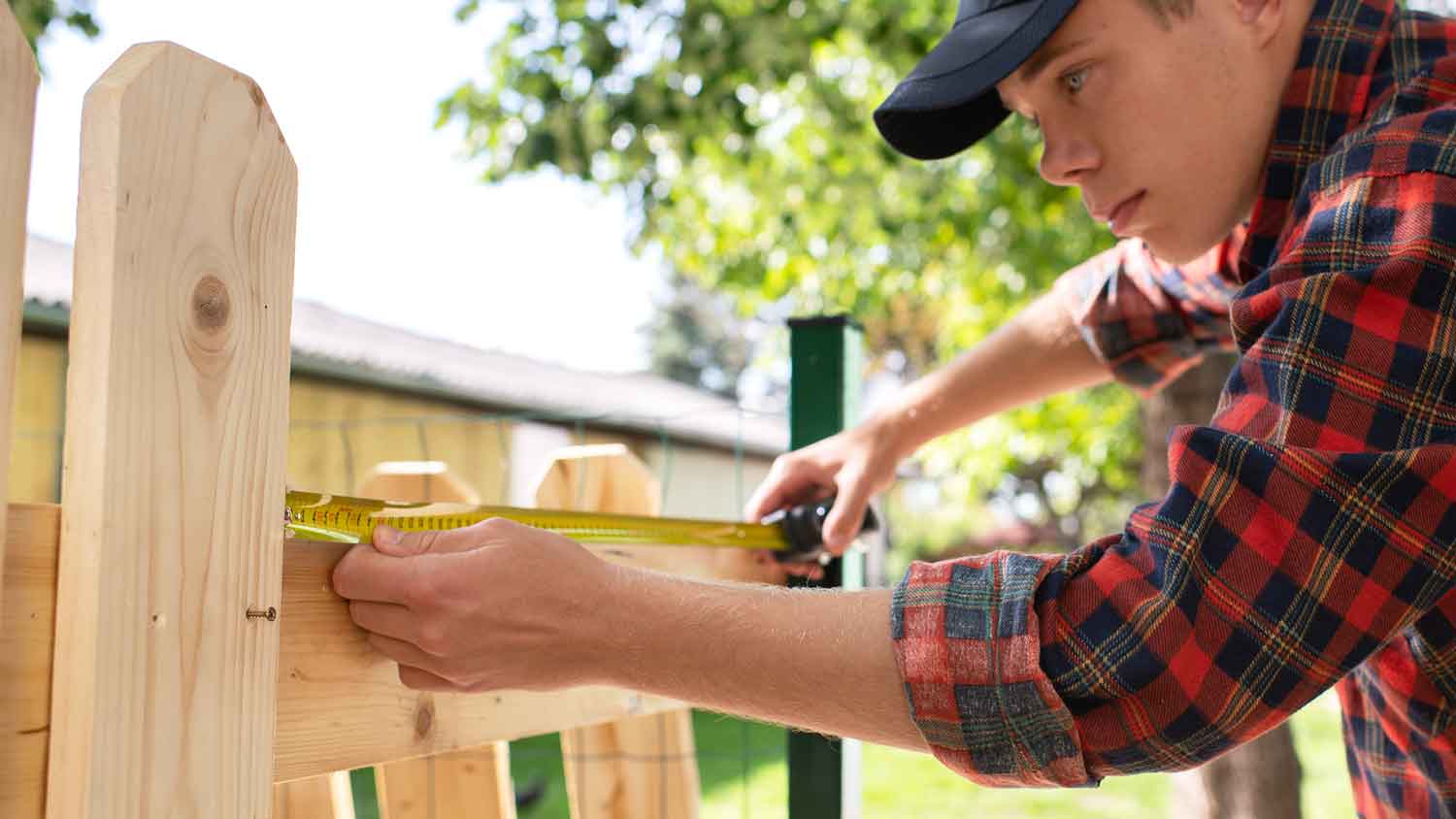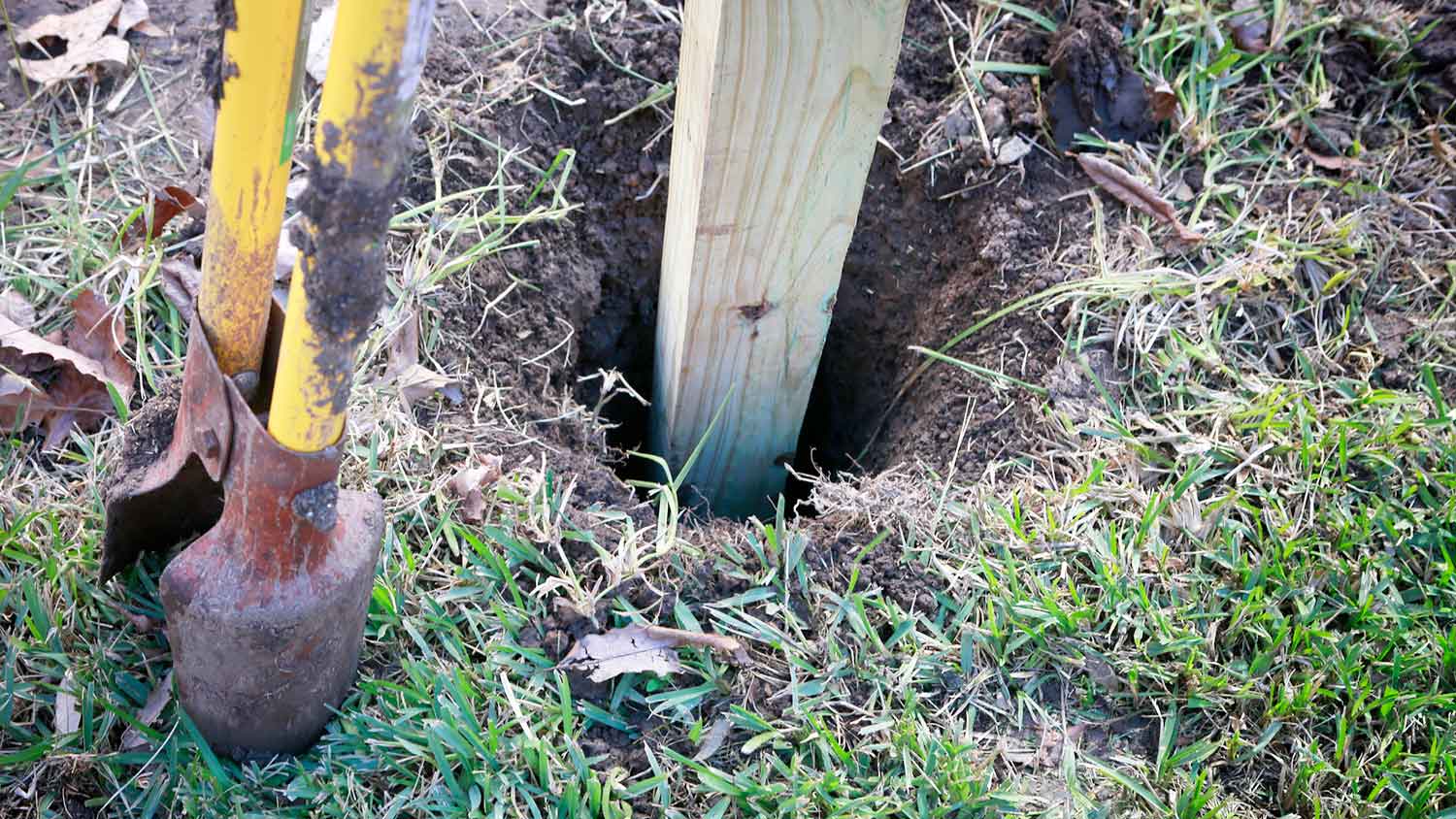
Looking for that rustic charm only a split rail fence can provide? Use this split rail fence cost guide to get an idea of what your fence will total.
Be sure your neighbors won’t picket apart


A beautiful fence enhances privacy, security, and curb appeal. Plus, it creates a safe place for kids and pets to play. Before you embark on your new fence installation, be aware of what to avoid while you do it. Dig into these 15 wrong ways to install a wood fence to avoid costly mistakes and make your property shine.
Always check your municipality’s rules before installing a fence. Otherwise, you risk complaints from your neighbors and the city, leading to a potential tearout of your entire new fence.
Some states or cities dictate how far from the property line or roadway you need to set your fence, especially if you have a corner lot. Sometimes, they have guidelines for fence height. You’ll also have to apply for a fence permit with your city or county, depending on where you live.
While you may have an idea of where your property line is, sometimes it’s different from what you think (and sometimes, that’s to your advantage). Mistakes happen, and previous neighbors make word-of-mouth arrangements that aren’t always accurate.
Before installing your wood fence, ensure you know your exact property line. Review your property survey or get a new one through a local land surveyor.

In some municipalities, you can’t build your fence right on the property line, but that’s not always the best choice, anyway. Consider placing it 2 to 6 inches inside the property line to allow for maintenance. You should also talk with your neighbors or homeowners association about the fence placement and project ahead of time so they feel in the loop and informed.
Before you dig on your property, you should always mark underground utilities to avoid gas leaks and serious injury (not to mention expensive repairs). A few days before your project, call 811, a call-before-you-dig hotline. A representative from the utility companies will mark the utility lines so that you avoid them when digging your fence posts.
You’ll need to adjust your fence plans depending on where the utility lines are or work with a local fencing pro for their recommendation.
A fence that’s not level or straight can look less than stellar on your property, leading to some serious disappointment. Place stakes in the ground to map out where you want your fence line. Run a string from stake to stake to ensure a straight path, and measure the perimeter of your fence to plan for materials. Measure twice and write the numbers down so that you can refer to them later.
You’ll also want to use your level frequently throughout the installation to ensure you’re keeping the fence line straight. Adjust your posts and slats for slopes.
You want a fence that lasts. Your fence materials, including treated fence posts, pickets, and the right-sized nails, should be sturdy and weather-resistant.
Research the types of fencing materials that hold up best in your climate. Look at different materials and designs to ensure you like the appearance of the fence, too. Spending a little more upfront on heavy-duty materials is often worth the investment. You should also consider the maintenance that’s required for each type, such as cleaning and resealing.

If your fence posts aren’t deep enough, the fence will lack stability and have a shorter lifespan. You’ll also be more likely to experience a wobbly, loose, or leaning fence, especially if you live in a climate where the ground freezes. Posts should be buried at least 1/3 of the fence height, but be sure to follow the post hole depth guidelines for your region. Use concrete to secure your posts and increase the fence’s stability and longevity.
Plan your posts to be equidistant from each other for the most stability and a professional look. Aim for fence posts that are 6 to 8 feet apart on-center (from the center of each post). Even placement prevents leaning and pressure in one direction.
You want your gate to open and close without sagging, dragging on the ground, or latching with difficulty. Be sure to measure and predrill holes for your hinges, and attach the hinges with precision and assistance from a partner or neighbor. Make sure there’s enough space on either side of the door for it to swing freely.

Place your pickets 2 to 3 inches apart, or follow the manufacturer's guidelines. Above all, keep the distance between your pickets the same for consistency. Too much space in between can reduce privacy, and pickets too close together can cause stability problems when the wood expands and contracts.
If you don’t have drainage around your fence posts, you could experience rot and weakened wood, leading to a leaning or wobbly fence. Use gravel at the base of posts to enhance drainage, and use rot-resistant posts. You can also slope the ground slightly away from the fence to let water drift away from the wood.
The hardware, such as your nails and brackets, keeps your fence together and offers stability. Choose galvanized ring shank nails and brackets that are heavy-duty and weather-resistant. Cutting corners on hardware isn’t worth the hassle and cost of redoing your fence again.

Installing a new fence attached to an old fence can create inconsistencies and a weak structure, especially if the old fence is weak, rotted, or leaning. Install the same fence around your entire property, if possible, for stability and appearance. If only one portion needs replacement, be sure to reinforce any failing parts of the old fence, especially where the two fences meet.
It’s critical to seal your entire fence to protect it from the elements. Most importantly, seal the post bottoms to avoid rot and moisture damage. Choose a semi-transparent or translucent sealer for your wood fence.
Building a fence requires specific equipment to ensure it is level, deep enough into the ground and properly fastened together. While you may be able to rent it from your local hardware store, we suggest contacting a pro with the proper tools and experience for the job.
If you aren’t skilled in woodwork, fence building, and pouring concrete for posts, building a wood fence might not be the time for a DIY project. You’ll need tools such as a post hole digger and a circular saw, along with woodworking skills and plenty of patience and precision. Consider hiring a local fence company to handle the job and ensure the fence is stable, level, and lasts a long time.
From average costs to expert advice, get all the answers you need to get your job done.

Looking for that rustic charm only a split rail fence can provide? Use this split rail fence cost guide to get an idea of what your fence will total.

Black fencing adds some elegance to your property while maintaining security. Use this black chain-link fence cost guide to get an estimate for your fencing.

The cost to install a picket fence varies by height, material, labor, and more. Read this guide to help you budget for a picket fence installation.

If you’re struggling to choose the right type of fence post for your yard, keep reading for a breakdown of fence post foam vs. concrete options.

Ready to restore privacy to your yard using a few tools and a little elbow grease? Here’s how to repair a chain link fence in eight simple steps.

Determining whether to repair or replace fence installations can be a difficult choice. Learn more about what factors can help you decide which way to go.